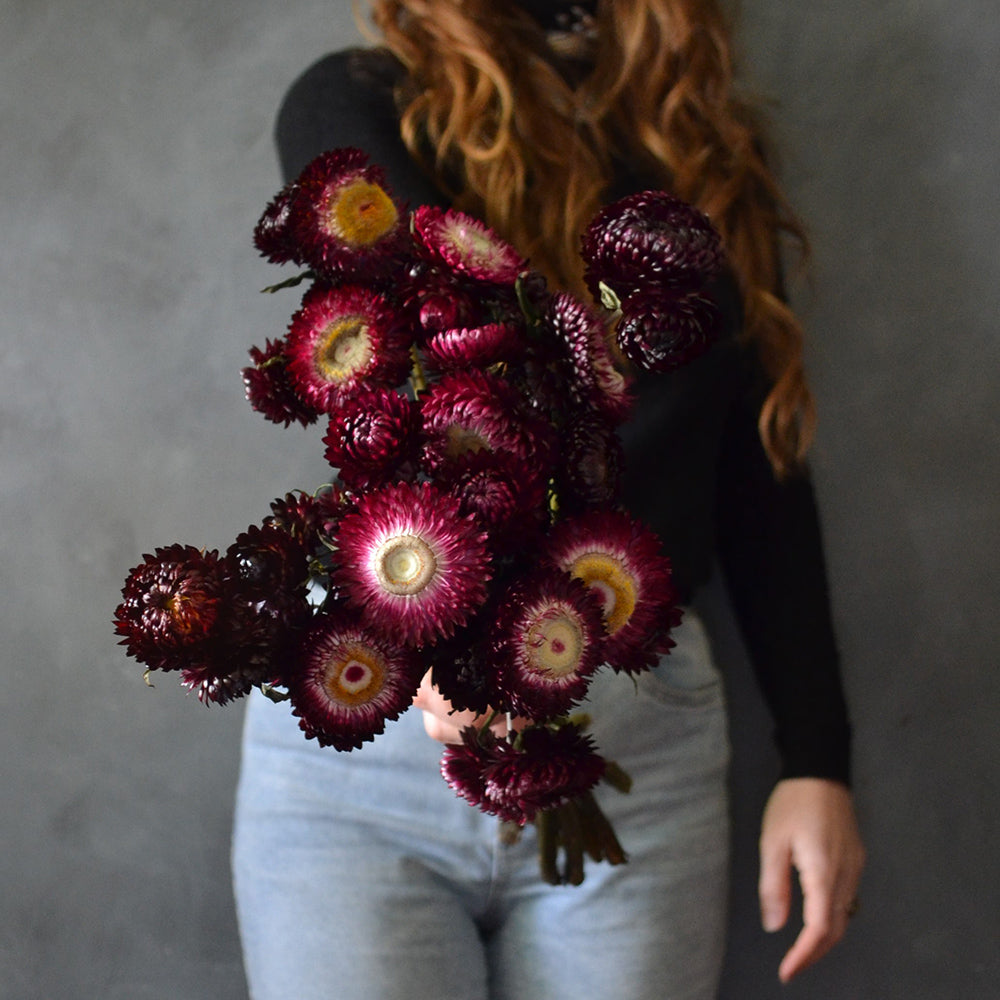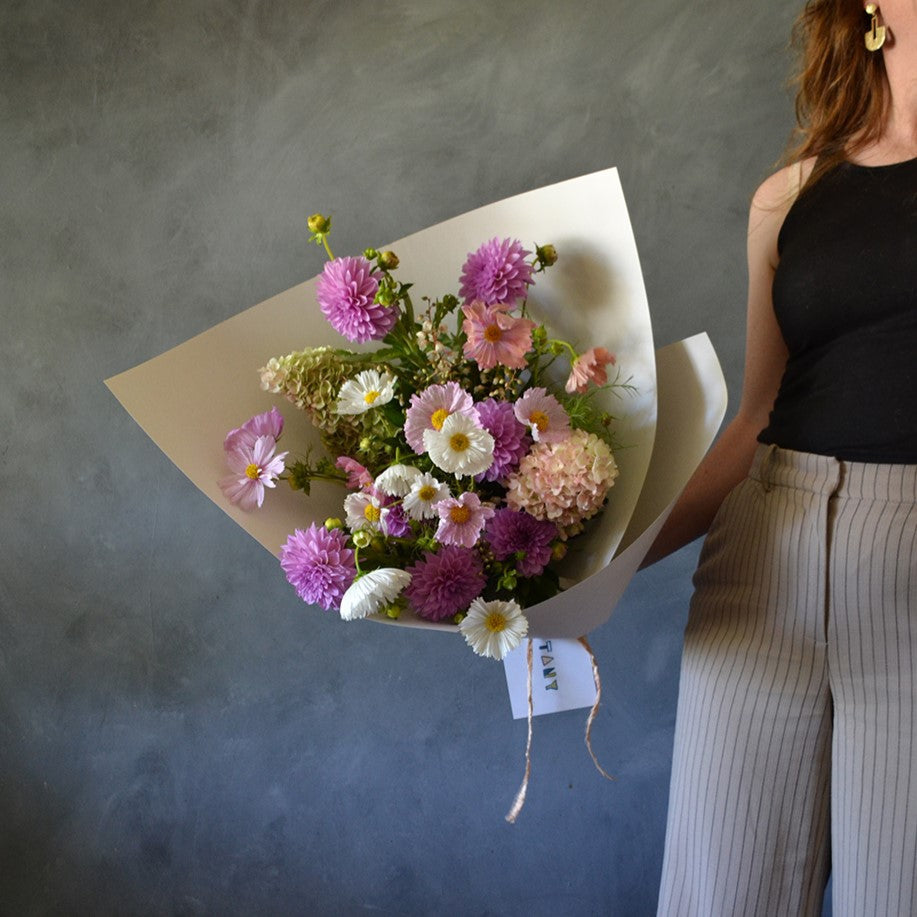Love gifting flowers but want to make sure they are low impact? Here’s everything you need to know about Valentine’s day flowers & how to make sure they align with your values.
Valentine’s Day is one of the biggest days in the floral calendar. For those wanting to express their feelings to another, or indulge in a little self-love, the 14th of February has become the perfect excuse to organise a delivery of fresh flowers.
For one flower in particular, the demand on this one day of the year is enormous. The red rose has become the symbol of love for Valentine’s day. Because of the demand for one specific flower on just one day of the year, the job to ensure that there is enough stems to meet demand has become near impossible.

The truth is that the supply from local farms simply cannot meet the demand. So what happens? Where do all those extra red roses come from?
The answer is; overseas. Although it is our natural season for roses here in Australia, many of the long stemmed red roses you see on Valentine’s day were not grown here. They were grown in warm climate places like Kenya and Columbia. Which sounds very exotic, but there are several environmental problems with this.
- Carbon Emissions : red roses are flown from overseas in cargo planes to Australia to help meet the enormous demand, creating unnecessary carbon emissions.
- Waste : bunches are packed with paper and tissue, then stacked into boxes which will all be disposed of upon arrival at the florist. local roses can be purchased loose in buckets or bunched in buckets with zero packing.
- Chemicals : in order to meet the Australian biosecurity requirements, roses must be dipped to their heads in a glyphosate bath to ensure invasive pests do not enter Australia.
- Unethical farming practices : overseas farms do not have the same rules as Australia when it comes to employees. There is a risk that your Valentine’s roses may have come from a farm with unethical practices.


So if you want to send Valentine’s flowers in a sustainable way, what can you do?
The best news is that in Australia, Valentine’s day falls in the summer. This means that we have an huge variety of locally grown and seasonal flowers available, and they are absolutely gorgeous. Think hydrangea, dahlias, cosmos, zinnias and more!
There are also roses of course, but do they need to be red? By expanding the floral options from being a single type of flower, to being all of the wonderful flowers of the season, means that your Valentine’s selection is almost endless. Not only will you get more for your money (the wholesale cost of red roses for florists is ludicrous!) you will also be supporting our local flower farms, sending fresh & seasonal flowers, reducing that large carbon footprint, and ensuring jobs for our local community.
If you have a soft spot for traditions you can still send red flowers, but maybe mix them with orange or pink roses instead of the red ones. Or if you just love the thought of spoiling someone rotten on Valentine’s day, pick their favourite colours and let your local florist work their magic – just make sure you ask for locally grown!
To prove that summer is a spectacularly great time for fresh, local flowers, we have purposefully not included a single image with red roses (did you notice?).
So let this year be the one that you break from tradition! Send locally grown and seasonal flowers with minimal packaging and you will have succeeded in being a sustainable Valentine’s day lover!





